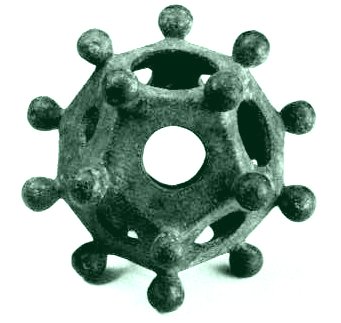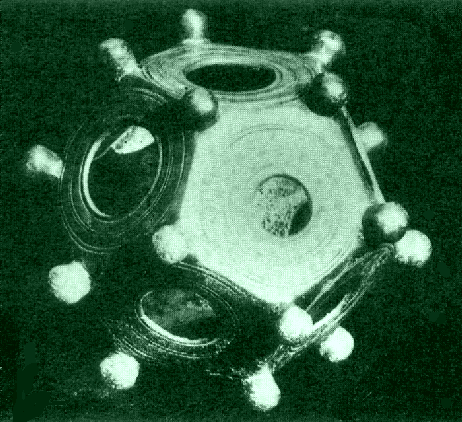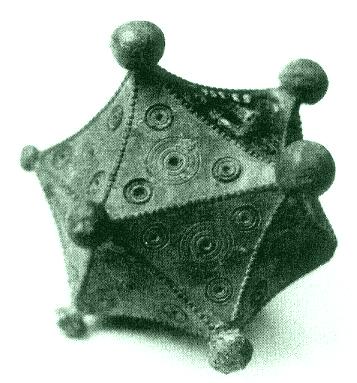
Roman Dodecahedra

The function of these dodecahedra has not been determined. (So
it is not clear that I should list them here under the category art.)
Speculation includes: candle stands, flower stands, staff or scepter decorations,
surveying instruments, leveling instrument, finger ring-size gauges, dice,
a toy to throw and catch on a stick, and geometric sculpture. No one knows.
 Artmann
also reports one Roman icosahedron, illustrated at left. It is also
hollow, bronze, and about 8 cm in diameter. This only deepens the
mystery as to the function of these objects.
Artmann
also reports one Roman icosahedron, illustrated at left. It is also
hollow, bronze, and about 8 cm in diameter. This only deepens the
mystery as to the function of these objects.
Interestingly, it was put away in a museum's basement storage, misclassified as a "dodecahedron" for forty years before someone noticed it was not a dodecahedron. That illustrates nicely how people see things differently depending on their background knowledge.
If you read German, read this
nice survey article by Bernhard A. Greiner.
Note: I took some artistic license and colorized these three images to be slightly green, from the original black and white.